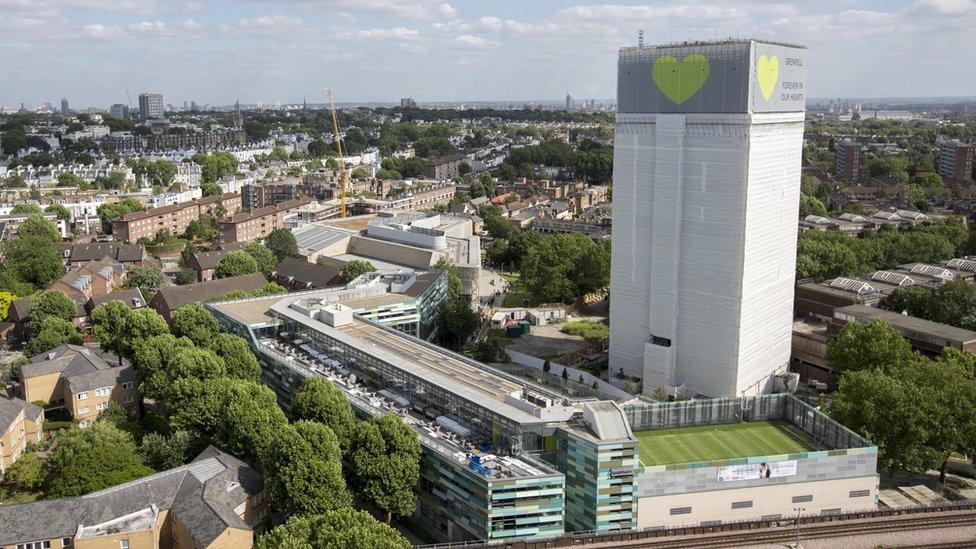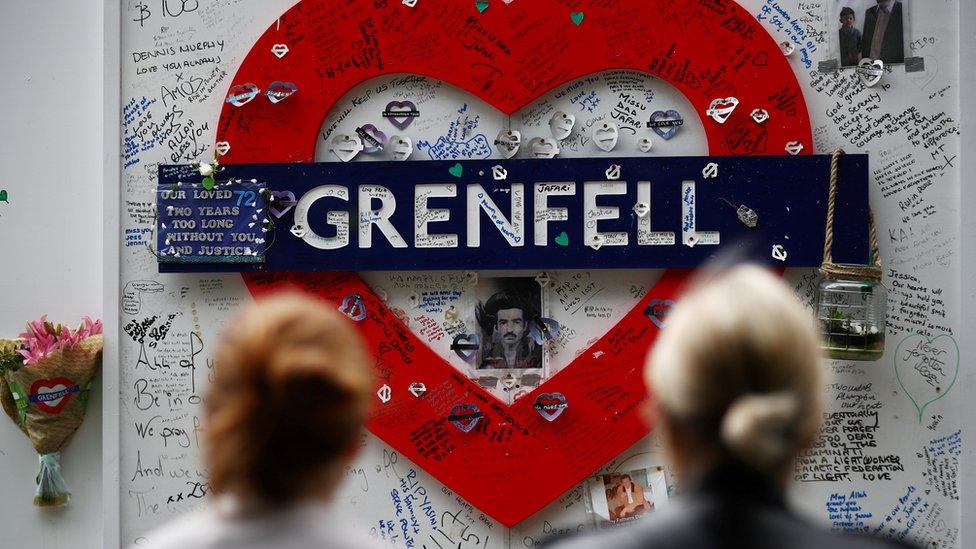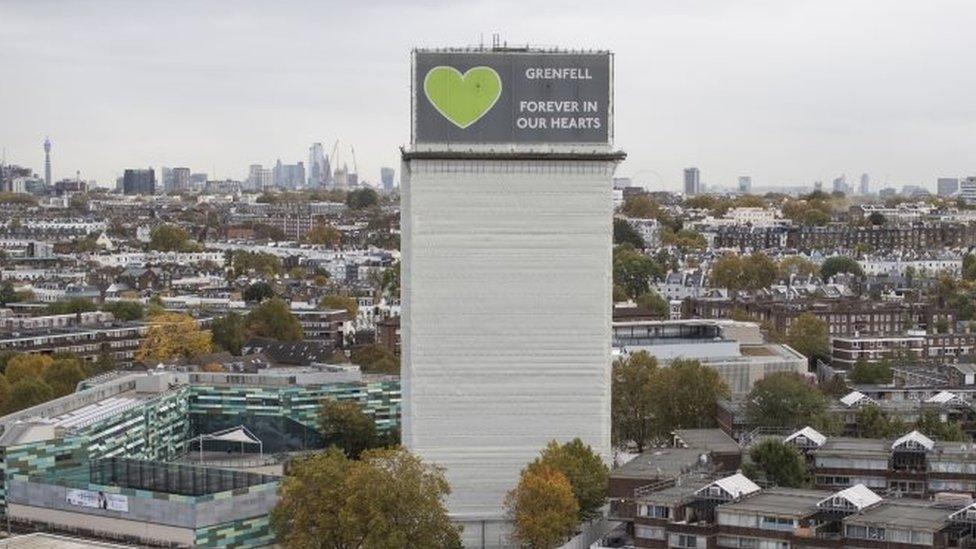Grenfell residents 'bullied' for raising safety fears before fire
- Published

One leaseholder said residents of the tower were treated as "sub-human"
Lawyers for victims of the Grenfell fire accused the council that owned the tower block and its building managers of "neglect, indifference and discrimination" towards residents.
Residents who raised safety concerns before the fire were "bullied" and "stigmatised", the inquiry into the disaster heard as it began a new phase.
But building managers denied being "dismissive" towards residents and their concerns.
The fire in June 2017 killed 72 people.
The new phase of the inquiry is examining how the building was managed, including risk assessments and how complaints were handled.
Lawyers for the victims and their families attacked the role of the Royal Borough of Kensington and Chelsea, which owned the block, and the body that ran it and oversaw the refurbishment, the Kensington and Chelsea Tenant Management Organisation (TMO).
Michael Mansfield QC, who represents a group of survivors and the bereaved, said the council regarded the 24-storey block in North Kensington as an "eyesore which required cosmetic surgery to make it more palatable to its elegant and wealthy neighbours".
He said the refurbishment, which took place between 2012 and 2016 and installed flammable cladding, only gave it "superficial facelift while neglecting underlying deficiencies".
According to the lawyers' opening statements, one of the residents to raise concerns was Shah Ahmed, who formed the Grenfell Tower Leaseholders Association and wrote to senior executives after a fire in 2010.
"There is certainly a high probability that, in the event of another fire, the whole building can become an inferno," he wrote, warning of the building's "interior staircase and malfunctioning ventilation system".
He demanded an independent investigation into the safety of the building and said residents were viewed as "sub-human".
Mr Mansfield said Mr Ahmed had to write the letter because the complaints system for residents was "outdated, cumbersome, not simple and was used to shut them off, lock them out essentially".
The council and TMO had a "culture of indifference", the lawyer said.
'Predictable and preventable'
Further warnings came from Edward Daffarn, a member of the Grenfell Action Group, who wrote a series of blog posts about safety issues in the building and raised concerns with the council.
Victims' lawyer Danny Friedman QC said when Mr Daffarn pointed out a fire door had a broken closing mechanism in 2015, the TMO seemed to care more about dismissing his complaints than fixing it.
On the night of the fire the door was still not working, allowing smoke into a central area on one floor where two people died.
The inquiry heard the council described Mr Daffarn's blog posts as "scaremongering".
Another lawyer for the bereaved, survivors and residents, Stephanie Barwise QC, read an email from council worker Laura Johnson sent during the building's refurbishment saying that a councillor would not want to attend a public meeting of people "moaning about minor issues".

Some safety concerns were dismissed as "scaremongering"
She said Grenfell had "always been a bad-tempered place and for some reason that general crossness has lingered and is stoked by various individuals and their agendas".
But in fact residents had correctly identified issues such as gas pipes in hallways, problems with fire doors, power surges, a failed ventilation system and access for fire engines.
Ms Barwise said the fire was "predictable and preventable" and accused the council of failing in its legal duty to ensure the building was safe, including after London Fire Brigade warned in the months before the fire that cladding could be dangerous.
The inquiry heard the council simply forwarded the letter from the fire brigade to the TMO, saying: "FYI."
'Sick building'
Vulnerable residents such as disabled people and children suffered higher death rates than any other group, Ms Barwise also told the inquiry, blaming it on a failure to take adequate precautions for them.
A quarter of the 67 children in the building died along with 41% of the vulnerable adult residents present on the night of the fire, she said.
Both the TMO and its fire risk assessor, Carl Stokes, "failed to identify the vulnerable residents at Grenfell" and there was a lack of an emergency or evacuation plan.
In written submissions, Mr Mansfield said that Grenfell had become a "sick building" over the course of decades.
"The residents saw the symptoms, and even suggested the cure," he said. "They were ignored and marginalised at every turn."
James Ageros, lawyer for the TMO, said relations with residents were "sometimes strained and difficult both during and after the refurbishment" but added: "The TMO does not accept that it ever adopted a dismissive attitude toward residents or indeed toward their complaints and concerns."
He said the inquiry should consider whether the TMO could have been expected to see through the "deceptions" of cladding manufacturers about the safety of their products.
Hundreds of other building owners and management organisations had not been able to "untangle this subterfuge", he said.
In its submissions, the council apologised for its failings in monitoring the TMO. James Maxwell-Scott, the council's lawyer, said there were too few officers assigned to the task given the "scale and importance" of the work.
He said the council is "truly sorry for the suffering and tragic loss of life" and said "the council could have, and should have, done more to stop it happening".
Related topics
- Published23 March 2021

- Published23 March 2021

- Published10 March 2021
